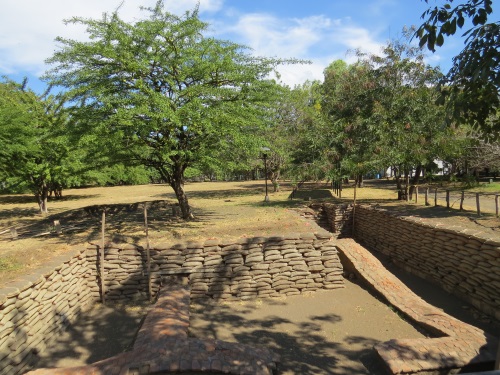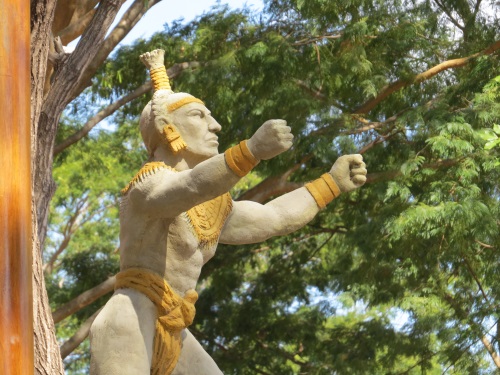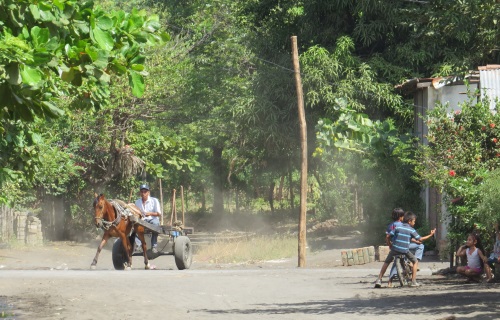León Viejo is said to be one of the earliest cities of Spanish America.
Panama Viejo, that I visited last week, makes the same claim. I have been looking for a list in which order these Spanish overseas cities were founded, but could only find
this one. It doesn't even include León Viejo; if I fit it in, with 1524 it would come on a shared 11th place among the Spanish colonial cities. The difference between this and many other cities on that list is that it has not developed since the 16th century, when it was abandoned.
 |
Anyway, León Viejo is of great importance to Nicaragua as it was its first colonial capital. The Spanish settled on the shore of what then was called the Lake of Leon. In its heyday, some 200 Spanish families lived here. A serious town was constructed for them, although there weren't many inhabitants: everything seems to have been supersized. There were no less than three convents, and the town hall spanned a full block. In the surrounding area lived thousands of native Americans, who were dominated and put to work by the Spanish.
The entrance fee to what is now an archaelogical site comes with a guide. I was the first visitor of the day, and the only person on site during my visit. We started at the two exhibition rooms near the entrance. One is about the Spanish town, the other focuses on the indigenous culture. The point is made that early Nicaraguans already were in contact with the Ancient Peruvians, as Peruvian pottery was found at this site. Another reminder of the plight of the indigenous people is the statue of an Indian attacked by dogs that now adorns the center of the plaza.
 |
Some 16 ruined buildings have been partially restored. Or maybe we should say "partially uncovered, and then put under protected cover again". Actually only the La Merced Convent has a recognizable shape. The road is also restored. I was actually more amazed by the trees, the fruits, the squirrels and the view of Momotombo Volcano than by the ruins. The site looks well-maintained, maybe surprisingly so for a poor country that Nicaragua is (
the 2nd or 3rd poorest in the western hemisphere after Haïti and possibly Honduras). This is also a pleasant change after seeing the difficulties that Panama has with conservation.
I reached León Viejo by public transport from León. That's a fun thing to do if you have time. You can get there by local buses, with a change in the town of La Paz Centro. The bus driver will know where "Las Ruinas" are, you have to walk 200m from the final stop in the town of Puerto Momotombo. The site is also signposted all over town, it's impossible to miss. I had to wait almost an hour for the return bus, and spent that sitting in the main street watching rural Nicaraguan life go by. Horsecarts are still a common mode of transport here. I also noticed a few wandering salesmen, going from door to door selling plastic stuff or fruits.
 |
León Viejo is not a spectacular sight, and I gave it only a 6.5 out of 10. But it is surely worth a detour when you're visiting northern Nicaragua. Although they may not see that many visitors, the archaelogical site and attached museum are kept in a good state.